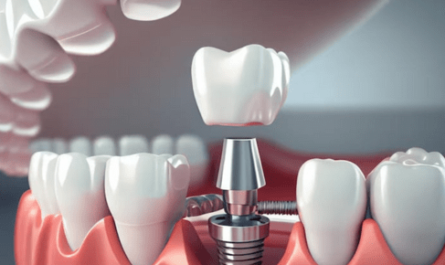Having a missing tooth makes it hard to smile or claim you have optimal oral health. There are many reasons to lose a tooth, including extensive tooth decay, infection, or injury. No matter how lose a tooth, a dental bridge may be the best solution for your mouth. A Buffalo Grove, Illinois dentist offers dental bridges that can effectively address missing teeth. But before you consider this dental restoration, learn more about it first. This way, you can be sure that bridges are the best option to choose.
What are Dental Bridges?
Dental bridges can improve your smile by filling in gaps. They span the gap between your teeth and are cemented to the teeth that surround the gap. A dental bridge comes with an artificial tooth to replace a missing tooth.
Dental bridges can be made of ceramic or porcelain to match your natural teeth color. They can minimize your risk of gum disease, correct bite problems, and improve your speech. Your dentist can determine the best treatment according to the missing tooth’s location, cost, and aesthetic considerations.
Kinds of Dental Bridges
Aside from standard dental bridges, below are your options:
- Implant bridges. These dental bridges are not attached to the teeth that surround the gap. Instead, a dental implant is used to secure the dental bridge to your jaw. This type of bridge may be necessary if you are missing more than one tooth or the adjacent teeth cannot support the bridge.
- Maryland bridges. These dental bridges attach an artificial tooth to a nearby tooth’s back. This may be a good option if you need a bridge at the front of your mouth.
- Cantilever bridge. This may be used if a bridge can only be connected to one tooth.
Regardless of your choice, let an experienced dentist attach your bridge properly and securely.
Reasons to Get Dental Bridges
Although you may ignore a missing tooth, especially in an unnoticeable location, failing to address a gap can result in issues. Your teeth tend to shift when you move one of them.
A missing tooth can lead to gum and mouth pain as your teeth start to shift. Also, your facial shape may change. Your teeth support your lips, and missing even one tooth can cause your lips to drop. As the teeth surrounding the open space land awkwardly on tough foods, you may feel pain whenever you chew. This depends on the location of the missing tooth. Seeking restorative dental care is important to restore your smile, improve chewing, improve speech, alleviate pain due to an uneven bite, improve self-confidence, and minimize early aging that results from sagging lips and skin.
Dental bridges are procedures that can be completed in a single appointment unless your permanent bridges are made off-site. Initially, you can expect your mouth to be tender; however, this should disappear quickly. After a full recovery, you will be left with a full and bright smile.
What Does the Procedure Involve?
When you go in for a dental bridge procedure, your dentist may educate you about how it works. This helps reduce anxiety and allows you to play your day. During a dental bridge procedure, the dentist will:
- Clean the teeth that surround the gap.
- Apply local anesthetic to alleviate pain.
- Shape the surrounding teeth to give room for the crown.
- Place a temporary bridge.
- Fit a permanent bridge.
- Cement a bridge if necessary.
You may be required to visit your dentist a few times after the bridge application to check your bite. If the dental bridge is not sitting properly against the other teeth, modifications may be necessary to even things out.



